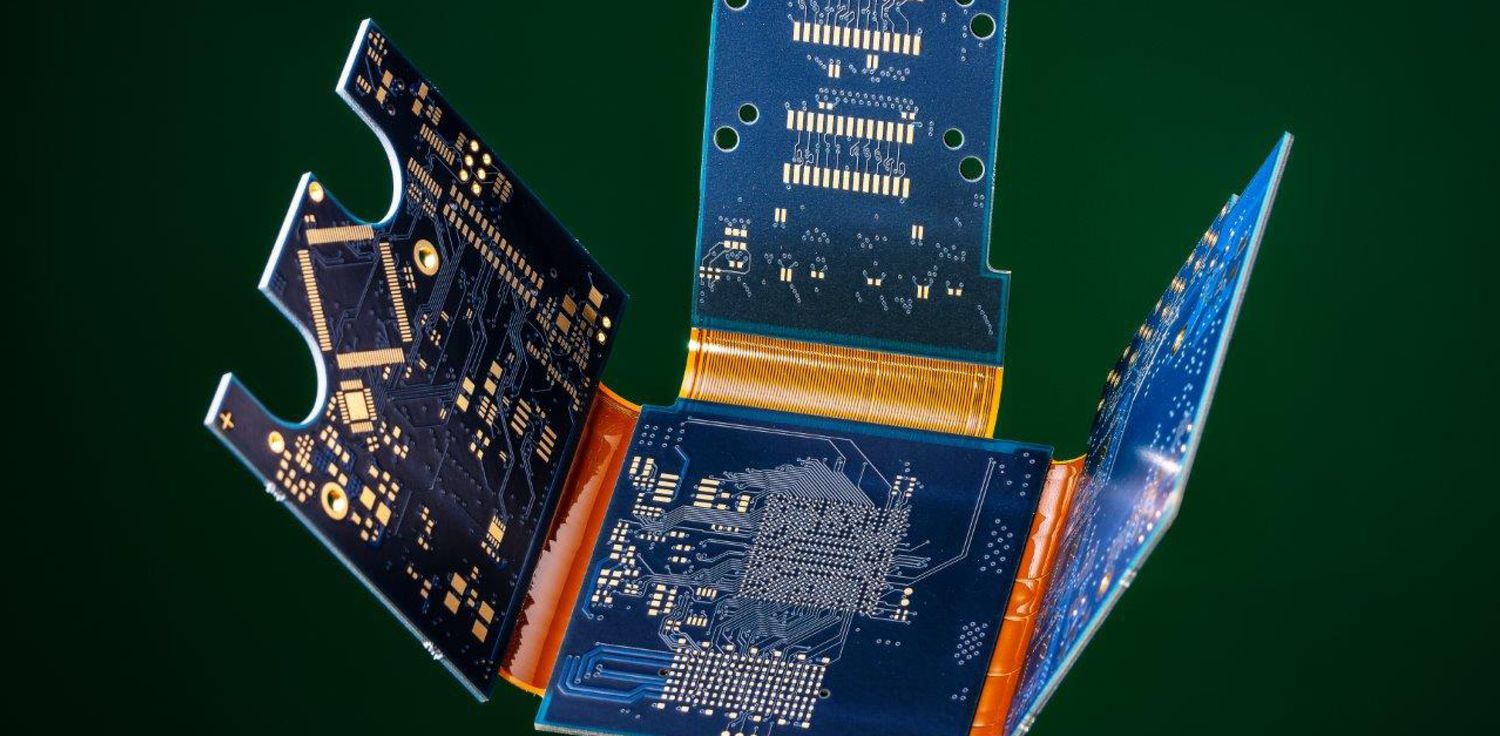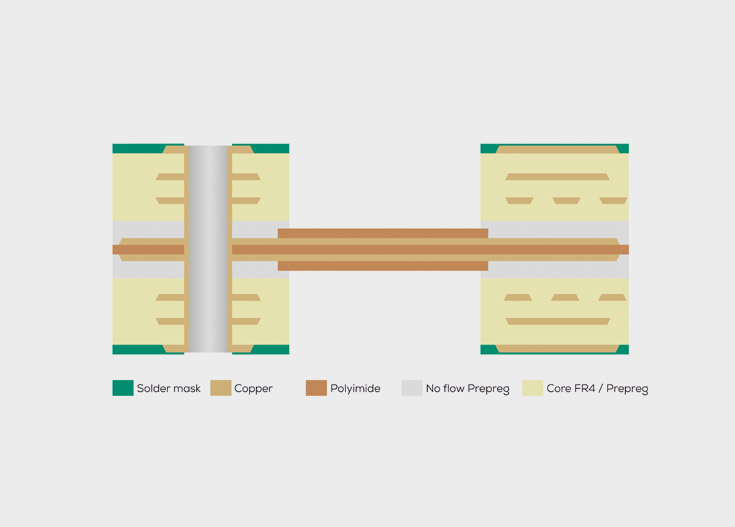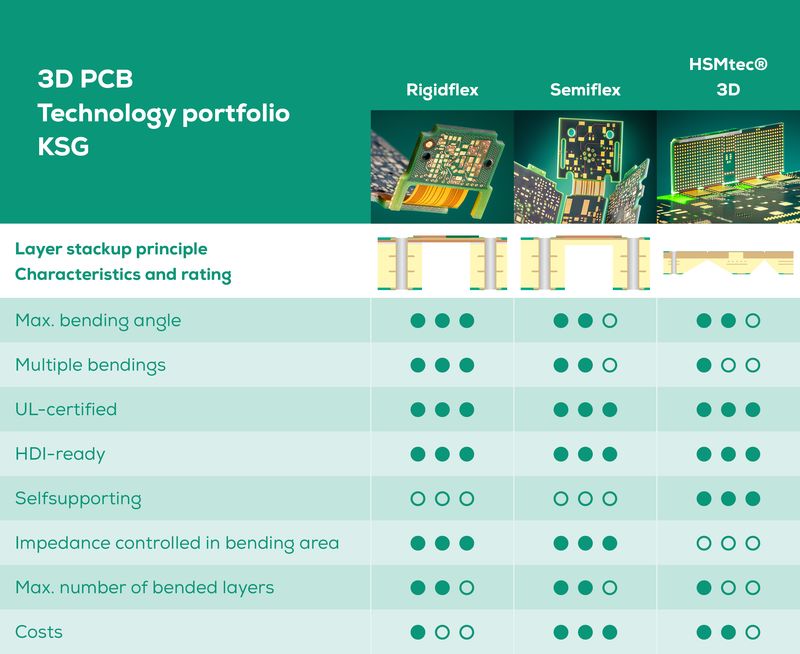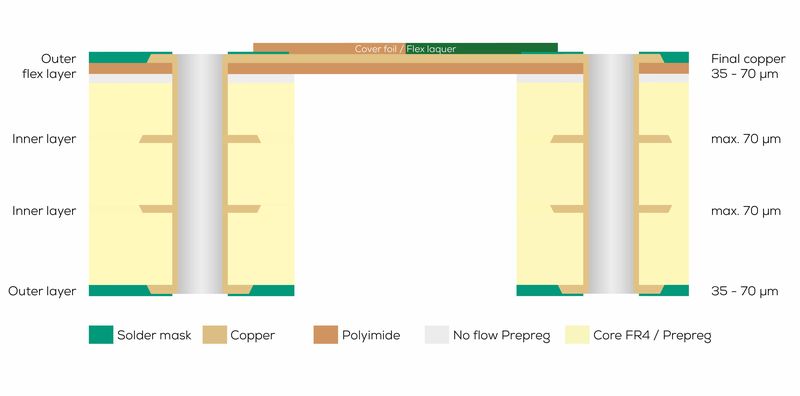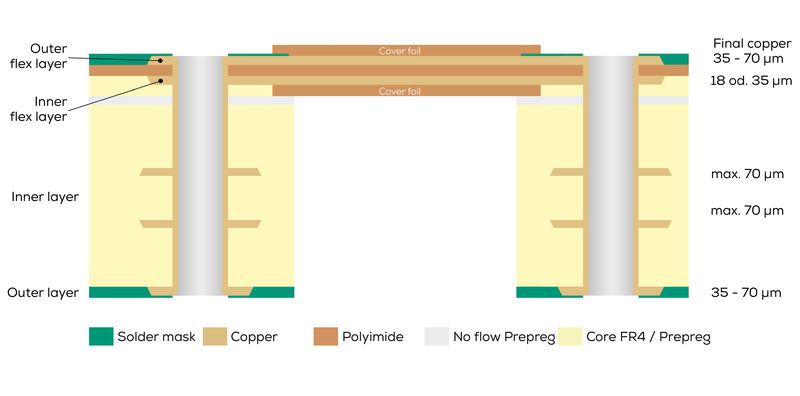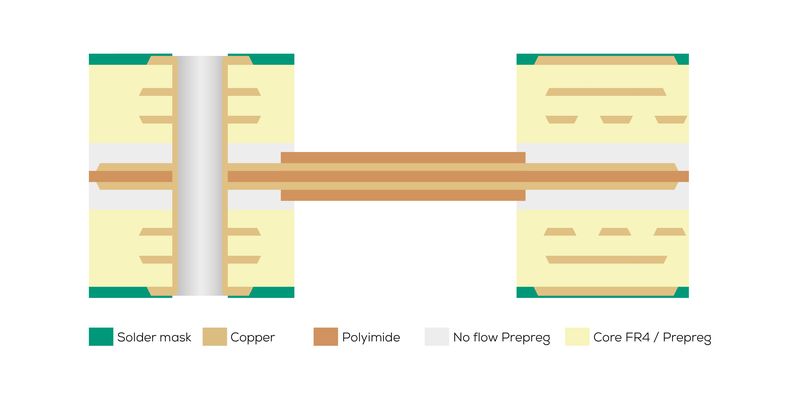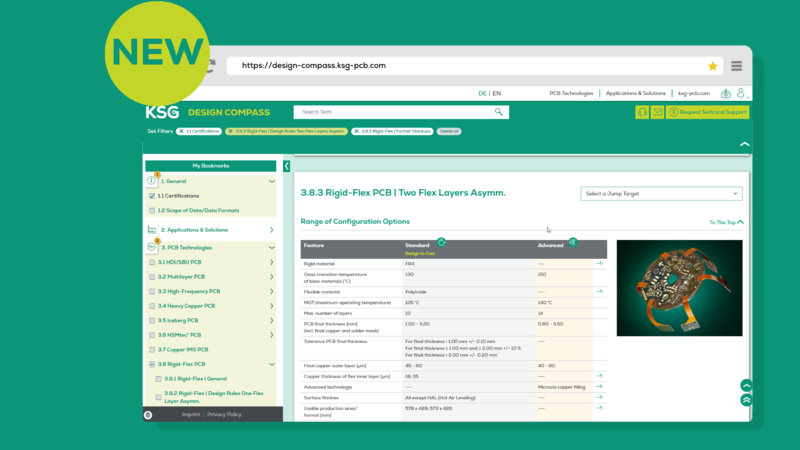Rigid-flex circuit boards
Rigid-flex PCBs are the perfect solution if multiple rigid PCBs need to be electrically connected in various installation positions and orientations.
- Home
- PCB Technologies
- Rigid-flex circuit boards
Your advantages
- From prototype to large-scale production from a single source
- Printed circuit board samples produced in series quality
- Increased reliability thanks to elimination of fragile connectors
- Miniaturisation of assemblies
- Reduction in processing steps for the further processing of assemblies
- Cost savings and minimisation of errors through the replacement of plug and soldered connections
- Optimised parts and logistics management
- Reduced assembly and testing effort
We are happy to support your rigid-flex project at every step along the way.
Contact our expert team here.
Rigid-flex PCBs are the perfect solution if multiple rigid PCBs need to be electrically connected in various installation positions and orientations. With our rigid-flex PCBs, we can offer cost-effective, high-quality, flexible products that can withstand bending stresses.
When multiple bends are required Rigid-flex PCBs are the optimal solution if several rigid PCBs are to be electrically connected in different mounting positions and orientations. The rigid-flex technology is extremely versatile with regard to layout options and geometries. As a result it has become an indispensable part of modern connection solutions:
- Symmetrical and asymmetrical stack-ups
- Total thicknesses from 0.6 mm to 3.2 mm
- Multiple flexible layers possible
- Bending radius of at least 1 mm
- Maximum bending angle of 180°
The manufacturing process is characterised by the pressing of two different layers of material. The first stage is to produce the FR4 cores in the same way as a multilayer. In parallel, the single or double layer flex circuit is produced on polyimide material. Then these semi-finished products are pressed into a rigid-flexible composite in a separate pressing process, using low flow or no flow prepregs as the composite material.
These composite layers are mechanically structured prior to the pressing process. The subsequent flexible areas are milled out so that the FR4 cores are not bonded to the polyimide material. The panels are then further processed in standard production processes. During contour processing, the transitions from the rigid to the flexible areas are finally deep milled with a groove, so that the non-bonded rigid material is removed above the flexible areas.
| Materials | Polyimide / FR4 |
| Number of layers | 2 – 18 |
| PCB thickness | 0.6 – 3.2 mm |
| Final copper | 18, 35, 70 µm |
| Conductor structures | Depending on final copper according to design compass |
| Minimum drilling diameter | 0.20 mm |
| Solder masks | See general technical specifications |
| Surfaces | See general technical specifications No HAL |
| Contour production | Milling Scoring / breakaway tabs Laser cutting |
| Bending radii | ≥ 1mm |
| Bending angle | ≤ 180° |
The values specified represent the maximum performance spectrum and may be restricted in certain combinations.
- Chemical nickel/gold
- Chemical tin
- Electroplated nickel/gold
- OSP
- others on request
Solder resist masks
- Photosensitive solder mask systems
- UV solder mask system: Screen printing
- Colours: green, red, blue, glossy black, matt black, white, yellow,
- Flexlack: green
Additional printing
- Identification/assembly
- Hole filler/through hole filler
- Peelable solder mask
- Heatsink
- Carbon
Edge plating
The end faces of the PCB contour can be plated in order to improve the EMC protection of a PCB, make electrical contact with the housing of the module or meet increased cleanliness requirements.
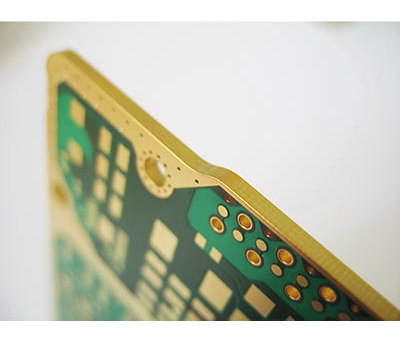
Milled plated through-holes
It is possible to produce application-specific components with so-called milled plated through holes. Due to the possibility of contact on the front side, the resulting PCBs can be soldered as components to another board (interposer).
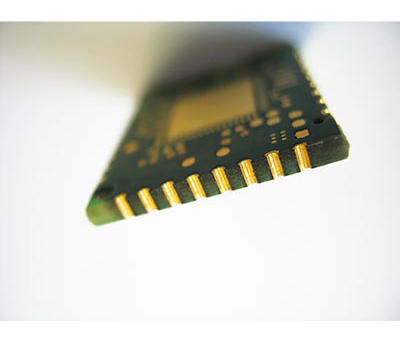
Contour machining
- Contour production: milling and scoring
Digital Design Compass
The smart platform for fast and reliable PCB development.
- 2 plants. 1 platform. Available 24/7.
- Design rules for all technologies
- Practical examples and design-to-cost tips
We’ve combined all the parameters for you in our Design Compass.
A safe track to be smarter together
Take advantage of the direct line to the experienced PCB experts in our Technical Support. We are happy to support you in every phase of your project.
Miniaturisation of complex installation options
Reliable multidimensional PCB technology
Cost savings and minimisation of errors through the replacement of plug and soldered connections
